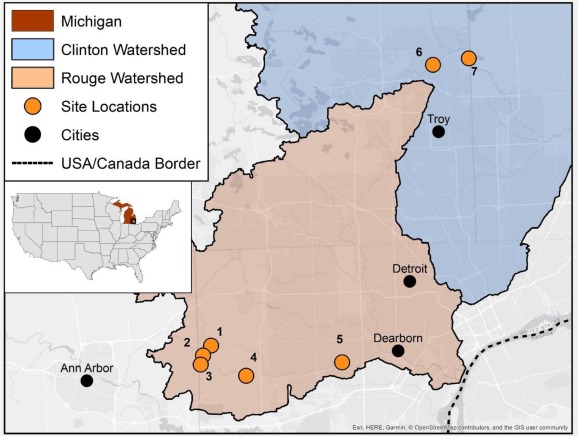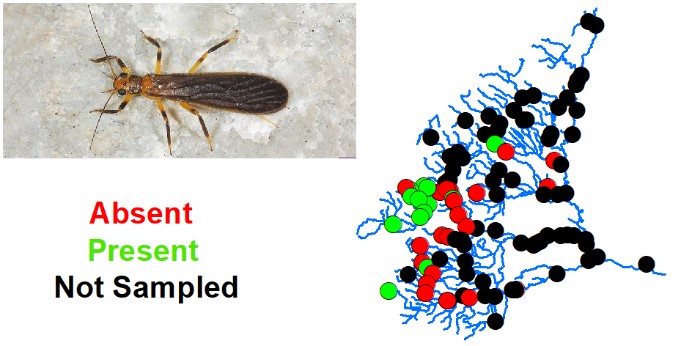Olivia F. Williams, Sally Petrella, Lauren Eaton, Robert Muller, Philip Kukulski, Paul Seelbach, Catherine Riseng & Karen M. Alofs. Ecological Solutions and Evidence, Vol. 6, Issue 2 April 2025. A Comparison of participatory science seining and electrofishing for fish assemblages in an urban river.
Staci L. Capozzi, Chunjie Xia, Matthew Shuwal, Gillian Zaharias Miller,
Jeff Gearhart, Erica Bloom, Lennart Gehrenkemper, Marta Venier, Dioxin in 2023, Indiana University Bloomington, 10-14 Sept. 2023, 43rd International Symposium on Halogenated Persistent Organic Pollutants. Distribution of per- and polyfluoroalkyl substances in fish organs from Michigan.
PFAS results from fish collected by Rouge anglers in the Rouge and Huron watersheds and processed and sent in for analysis by Ecology Center.
Horvath, Parolari, Petrella, Stow, Godwin & Maguire. 2022 Journal of Hydrology. Volunteer science data show degraded water quality disproportionately burdens areas of high poverty
CIGLR Summer Fellow Isabelle Horvath used FOTR’s benthic macroinvertebrate monitoring data to define long term water quality patterns and examine socio-economic and environmental variables through modeling. Long term volunteer Tim Maguire provided his expertise in the development of the models. Poverty had a strong negative relationship with Stream Quality Index scores with a 1% drop in scores with each 1% increase in poverty. Poor water quality in Rouge streams is disproportionately affecting impoverished communities.
Krabbenhoft & Kashian. 2020 Ecological Indicators. Citizen science data are a reliable complement to quantitative ecological assessments in urban rivers
Former Bug Hunt Team Leader Corey Krabbenhoft compared FOTR and Clinton River Watershed Council’s Bug Data to professional quantitative sampling. Volunteers undercounted some rare taxa, giving a more conservative assessment of sites. Citizen science organizations can provide a useful complement to traditional monitoring practices, particularly given the long-term, spatially broad, and repeated nature of their sampling.

Maguire & Mundle. 2020 Environmental Science & Technology Letters. Citizen Science Data Show Temperature-Driven Declines in Riverine Sentinel Invertebrates
Scientists Tim Maguire & Scott Mundle used FOTR’s Stonefly Search Data to examine stream health. Volunteers were found to accurately find stoneflies 81% of the time. Stoneflies were found to be increasing by 1.6% and declining by 6.4%, for an effective extinction rate of 4.8%. Summer water temperature above 18 degrees C (64 Degrees F) was the best predictor of stonefly presence. Reducing urban heat island effects by reducing paved surfaces and preserving trees that shade the river are neeeded to help retain stoneflies.

Fusaro, McCulloch, Petrella & Willis. 2019 Zoo Symposia. Discovery, dispersal, and genetic diversity of Rhyacophila lobifera Betten, 1934 (Trichoptera: Rhyacophilidae) in southeast Michigan, USA
Scientist Abigail Fusaro worked with FOTR staff and volunteer biologist Bruce McCulloch to examine the distribution of a caddisfly species first found in Michigan by FOTR volunteers in 2003 and track its dispersion in the Rouge and Huron watersheds through 2015. Initial colonization was multi-directional then strictly downstream after 2011.

Categories
-
Our WorkShort description about the category for context.